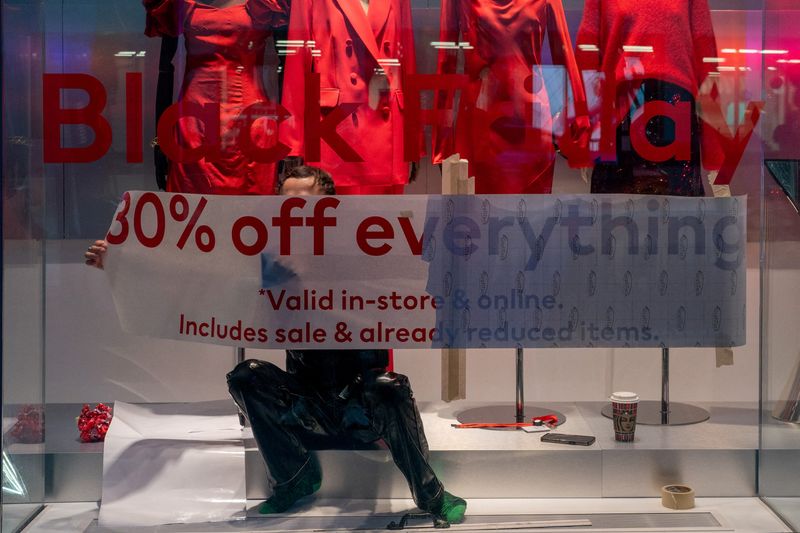By Helen Reid
LONDON (Reuters) - Swedish fashion retailer H&M (ST:HMb) is under pressure to prove to investors it can turn its fortunes around and fend off fierce competition from fast-fashion rivals such as Zara, whose sales are rising, and China-founded Shein, set to go public this year.
H&M, which sold more than $22 billion in clothing and accessories in its 2023 financial year, aims to reach an operating margin of 10% by the end of 2024.
Faced with falling sales, the retailer with around 4,300 global stores is intensifying cost-cutting, prioritising profitability over revenues.
When it reports full-year results on Wednesday investors want to be able to see its pathway to that margin goal, against a backdrop of shaky consumer demand.
H&M's operating margin improved to 5.9% at the end of the third quarter, from 3.9% a year earlier, but the challenge this year will be to keep increasing margins at a time when many clothing retailers have signaled price cuts.
Known for dresses under $15 and $19.99 jeans, H&M could tweak its pricing strategy this year to reach its margin goal, said Andreas Lundberg, analyst at SEB in Stockholm. Its "price mix will be more important," he said.
"Although the last 10-15 years have been volume-driven for H&M, volumes are also very expensive to handle internally, in warehouses, in stores," Lundberg said. "In the future you may see fewer volumes."
Budget fashion retailer Primark also sees its adjusted operating profit margin recovering to more than 10% this year as sourcing costs fall, enabling it to absorb the higher shipping rates driven by disruptions in the Red Sea.
Bernstein analysts see H&M and Primark among the most impacted apparel retailers given their higher reliance on Asian sourcing and high use of sea freight.
Given that risk, another key figure investors will watch is H&M's stock-in-trade: the amount of inventory the retailer is carrying.
"H&M has managed to decrease this number significantly and the trend continues downwards, meaning they are shortening time from design to production to shipping," said Adil Shah, portfolio manager at Storebrand in Oslo, which holds H&M shares.
H&M's stock-in-trade as a percentage of rolling 12-month sales was 17.1% at the end of the third quarter, down from 21.6% a year earlier.
H&M, whose other brands include Arket, Cos, Monki, Weekday, and & Other Stories, has been closing stores and laying off staff. On Friday, it announced a plan to shut more than a fifth of its stores in Spain and lay off as many as 588 workers.
H&M had 701 fewer stores by end-August last year compared with the end of 2019, a decline of 13.8%.
Its cost-cutting has helped improve investor sentiment. H&M shares are up around 29% from a year ago, but with a price-to-earnings ratio of 18, still trade at a discount to Zara-owner Inditex (BME:ITX), whose ratio is roughly 20.8.
Reluctant to fire the starting gun on price cuts, mass-market fashion retailers may "wait to see who will move first", said Alex Romanenko, head of retail at pricing consultancy Pearson Ham Group.

Bank of America analysts see apparel prices in Europe falling by 2% in 2024, having risen by 4.5% last year.
($1 = 10.4773 Swedish crowns)